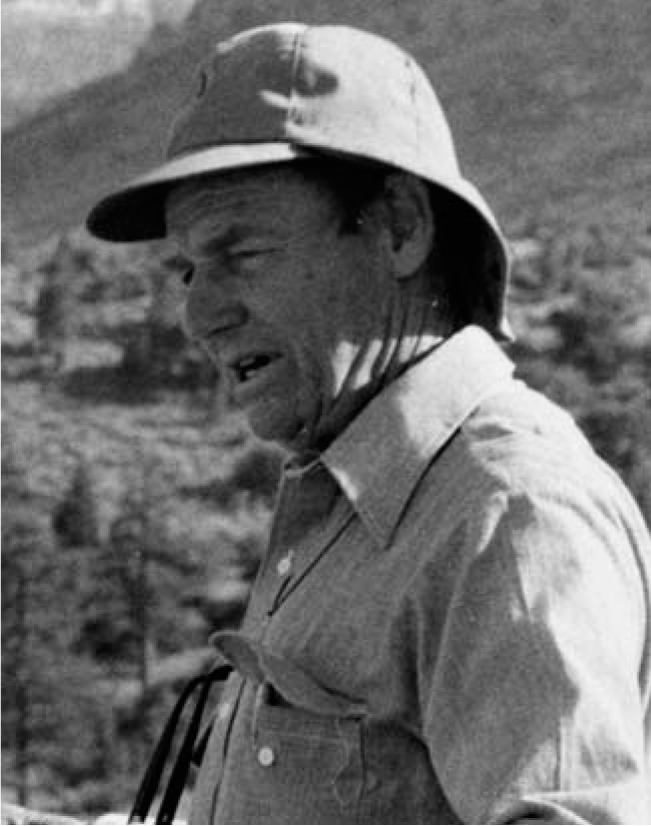Robert Phillip Sharp
DOI: 10.1063/1.1995761
Robert Phillip Sharp, one of the leading figures of American geology, died peacefully in his home in Santa Barbara, California, on 25 May 2004. Bob’s enormous contributions on the physical processes that have modified the surfaces of Earth and Mars are scientific classics that have substantially enhanced our understanding of the unique roles of water, wind, and ice in modifying planetary surfaces. Virtually an equal contribution was Bob’s vision and leadership in geological academia, primarily at Caltech.
Bob was born in Oxnard, California, on 24 June 1911. As an undergraduate at Caltech in the 1930s, he was quarterback of the football team in his senior year and an outstanding student. He chose to do his doctoral work at Harvard University and prepared a thesis, under Kirk Bryan, on the geology of the Ruby–East Humboldt Range area of northeastern Nevada, where his discovery of Pleistocene glacial landforms in the summit area sparked an interest in glaciers and glaciation that persisted throughout his career. He also participated in a two-month geological expedition boating down the Grand Canyon, the inner gorge of which was, at the time, essentially terra incognita in terms of its geology.
Jobs were scarce in 1938, when Bob obtained his doctorate, and he felt lucky to land an academic position at the University of Illinois. He was called into military service with the US Army Air Corps five years later and researched and wrote survival manuals for downed fliers in the North Pacific–Alaska region. His personal survival experiences in the westernmost Aleutians and on the slopes of Mt. McKinley further stimulated his interest in a variety of geological topics, particularly glaciology.
After a brief postwar period at the University of Minnesota, he returned in 1947 to Caltech, where he spent the remainder of his academic career. His teaching was legendary, particularly his introductory geology course. On nomination by a group of undergraduates, he was named by Life magazine in 1950 as one of the top 10 US college teachers of the year. In 1952, he was appointed chairman of the division of geological sciences and, during the ensuing 16 years, played a central role in building Caltech into a leader in innovative efforts in geochemistry and planetary science.
In his research, Bob embarked on a major drilling program on the Malaspina Glacier in southeastern Alaska in an attempt to better understand the physics of glacier flow. He subsequently shifted that effort to the Blue Glacier on Mt. Olympus in northwest Washington. His collaboration with geochemist Sam Epstein led to pioneering efforts in climate change. Bob also studied the role of wind as a geological agent; his work on dune formation is particularly well known. Around 1961, another important chapter in his scientific career began with attempts to understand geological surface processes on Mars. Bob and Caltech colleagues formed the team to evaluate the Mariner TV imaging of Mars and contributed to the recognition of the role water played in Martian evolution, still a central theme in our growing understanding of that planet.
Bob’s leadership at Caltech was punctuated by two major developments. The first was the phasing out of the vertebrate paleontology program and a major thrust, supported by Linus Pauling and others, into the emerging area of geochemistry. Many classical geology colleagues around the country, who literally accused Caltech of “selling out” geology to the geochemists, initially did not look favorably on the new emphasis on geochemistry. However, they subsequently recognized it as a forward-looking and daring move. The second new thrust in the 1960s required a choice between ocean-floor geophysics and planetary science. The presence in Pasadena of the Jet Propulsion Laboratory was a strong argument in favor of planetary science, and Bob even received the blessing of the Caltech astronomers, who were deeply engrossed in far-out space and were quite willing to “give away” our solar system to the geologists.
Numerous national honors were bestowed on Bob during his career. But the two in which he took the most pride were the 1977 Penrose Medal of the Geological Society of America—its highest honor—and NSF’s National Medal of Science, presented to him in 1989. When awarded the Penrose Medal, he commented that “few scientists in other professional fields seem to enjoy and savor their work as fully as do Earth scientists.” If there was one activity Bob enjoyed above all, it was the planning and leading of geological field trips for students, alumni, and others. Those included yearly trips to Hawaii for graduating students.
It is an intriguing enigma that Bob, with his profoundly rigid self-discipline and basically conservative ways, would nevertheless leave a lasting legacy of truly forward-looking innovation in his scientific and academic ventures. He is remembered so fondly by a multitude of friends from all walks of life as an immensely warm and generous individual.

Robert Phillip Sharp

More about the Authors
Clarence R. Allen. California Institute of Technology, Pasadena, US .
David J. Stevenson. California Institute of Technology, Pasadena, US .
